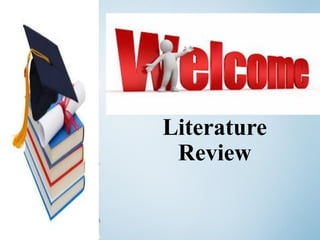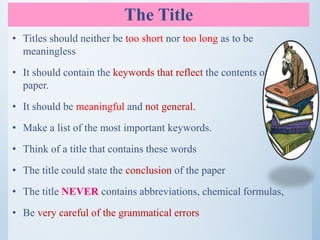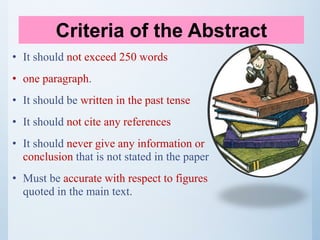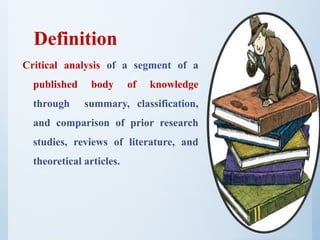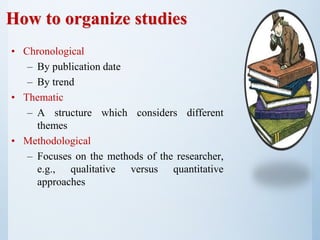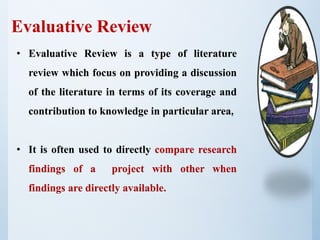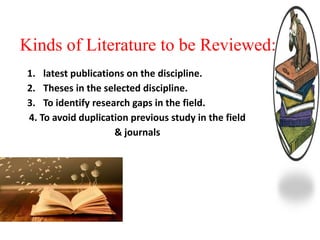The document summarizes the key steps in writing a literature review:
1. The introduction gives a quick overview of the topic and organizational structure.
2. The body contains a discussion of sources, organized chronologically, thematically, or by methodology. It analyzes and synthesizes previous research on the topic.
3. The conclusions discuss what has been learned from reviewing the literature and identifies potential gaps for future research. The overall purpose is to critically evaluate previous research and establish a foundation and need for the current study.

